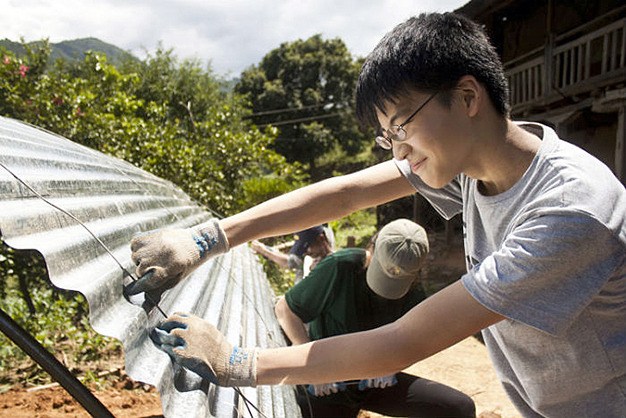By Piljin Kwak
Special to the Reporter
From the 7 billion people living on this earth, nearly half of them — over 3 billion — are living in poverty, and within that, around half of them live in extreme poverty with a meager income of less than $1.25 per day. One out of every two children is currently living in poverty, desperately fighting for their lives, and yet thousands die daily.
Poverty, illiteracy and health problems rampage nations all over the world, and I, a 16-year-old Korean-American who has never stepped foot onto soil of developing countries, and who has lived predominantly oblivious to the atrocious living conditions of the majority, visited Nepal this summer to get a firsthand look and experience.
Nepal is a landlocked country between India and China, with a population of around 28 million. It is a developing country with people struggling with many problems shared with the bulk of the world, and I decided to spend about two weeks there.
Initially, my visit was intended to serve as a short period of service and volunteering, mostly fueled by the moral of “living for the sake of others” that was drilled into me from a young age. I built temporary shelters during a pivotal period following the April 7.8-magnitude earthquake for those who were directly affected, who lost families and homes to the worst natural disaster to strike Nepal since 1934.
However, as the days grew longer and my stay neared its end, that motivation grew and transformed into a different kind of purpose: a personal interest, almost a hunger to learn about this nation’s fascinating history, its people, the difficulties they face and ways that I can contribute to heal the wounds inflicted by years of suffering.
During this summer experience, the goal of helping everybody played a key role motivating me.
This feeling of commitment started even from the car ride from the Nepali airport to the center where I stayed. Just the 30-minute-long view from the backseat, looking through a window into the capital, Kathmandu, spoke volumes about the state of Nepal.
Nepal, notorious for the famous Mt. Everest, generally evokes images of untainted mountains and forests. However, Kathmandu delivers a blatant dissimilarity to this standing. It ranks one of the highest populated cities in the world.
In fact, I dryly observed that there stood mountains of garbage littered all over streets instead. The air itself is almost impossible to breathe comfortably in, and the infrastructure is in poor shape. Very few roads are developed, and buildings are in no better shape, both further devastated by the earthquake.
At first, the contrasting juxtaposition of Nepal’s current state and America was a source of great shock for me.
I felt indignant at the overall unfairness of how on one side of the planet, we can have overall equality and quality of life, while some people just across the globe are barely living as “untouchables,” the nickname given to the lowest class in their caste system remaining from a long and complicated history.
However, through it all, I met a variety of great people who gave me so much, each striving nobly to help other people, and displayed such love and care to me despite how little they had, and I was touched by their willingness to give so selflessly.
Out of the many things I realized during my meaningful, albeit short experience, one of my greatest was that Nepal still has great potential despite everything, as it was built upon a strong cultural and historical foundation. The people continue to fight through the aftermath of the earthquake and are coming back stronger than ever.
And no matter how small, with each small act we do for others, I believe we can restore and revive the hope of this great nation.


